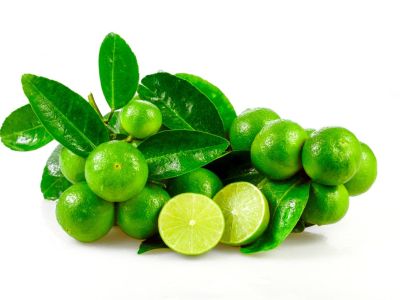Key Lime Tree Information
Mexican key lime (Citrus aurantifolia), also known as key lime, bartender’s lime, and West Indian lime, is a moderately sized, evergreen fruit tree. It grows vigorously once you plant it in the ground, reaching heights of 6 1/2 to 13 feet (2 to 4 m.) tall. Mexican key lime trees have fragrant flowers with deep green leaves and the yellow-green limes that are about the size of a golf ball. Mexican key limes are the preferred fruit used by bartenders and pie bakers around the world. Growing key limes is not difficult when you meet their basic requirements.
How to Grow Mexican Key Lime Trees
When learning how to grow Mexican key lime trees, start by choosing a healthy tree. The leaves should not have holes or any ragged edges because this suggests bug damage. Inspect the foliage, especially the underside of the leaves for bug infestations. Tip the pot over so you can check the bottom drainage holes for roots. If you notice any, this suggests that the tree has grown in its pot for years and it is pot bound, so put it back. Mexican key lime trees aren’t cheap. Spend your money wisely and get the best. Key lime trees are hardy in the U.S. Department of Agriculture zones 10 and 11, and they are sensitive to cold temperatures. If you live in California, plant this tree in a protected area, like the south side of your house. Mexican key lime trees need a site that has at least 10 hours of full sun. Mexican key lime trees can grow in a variety of soils, as long as it is well draining with a pH level of 6.1 to 7.8. Prepare a 4-foot (1 m.) diameter circle to plant your tree. Amend the soil with 4 to 5 inches (10 to 12.5 cm.) of organic compost, working it into the soil to a depth of 36 inches (91 cm.). Level the soil with your rake and then let the ground to settle for a week. When you dig the planting hole, make it twice as wide as the root ball, with an equal depth. Remove the container. Before you plant your Mexican key lime tree, check it for visible roots. If you see any, gently pull them away from the sides of the root ball with your fingers. If the roots are left growing in this position, they will ultimately choke the tree to death. Center the root section in the hole, making sure that the top of the root ball is 1/4 to 1/2 inch (6 mm. to 1 cm.) higher than the surrounding soil. Fill the hole with soil around the root ball, firming it as you go to collapse air pockets.
Care of Key Lime Trees
Once a week, water the Mexican key lime tree thoroughly. Place a 2- to 4-inch (5 to 10 cm.) layer of mulch over the soil to help it retain moisture and prevent weeds from growing. Keep the mulch 2 inches (5 cm.) away from the bark of the tree to prevent disease. When you are growing key limes, water them deeply and slowly so the moisture reaches deep into the soil. If the weather is hot and dry, you may need to water more frequently. Fertilize the Mexican key lime tree with a slow-release fertilizer that is high in nitrogen. It should have an NPK ratio of 2-1-1. Make sure that the fertilizer you use has trace minerals like iron, zinc, and manganese. If you notice the leaves turning yellow, that is a sign that it needs more fertilizer or the drainage is poor. Mexican key lime trees rarely have a pest problem except for snow scale on the island of Niue during a prolonged drought, though they are occasionally affected by some lime tree issues. Disease and fungal problems include withertip, or lime anthracnose, Fusarium oxysporum, Elsinoe fawcetti, algal disease, collar rot, and Sphaeropsis tumefaciens.
